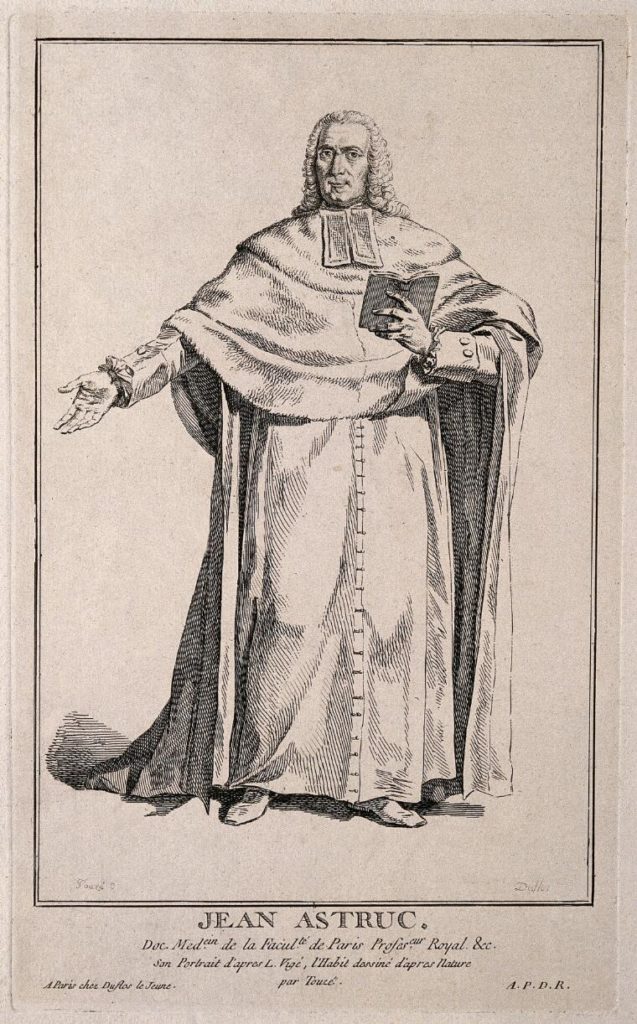
Jean Astruc was born in 1684 in Sauve, France and studied medicine at Montpellier, graduating in 1703. He then became professor of medicine in Toulouse (1710) and Montpellier (1716), superintendent of the local mineral waters (1721), physician to the king of Poland (1729), and professor of medicine at the royal College of Medicine in Paris (1731) as well as physician to Louis XVI. He became a member of the Royal Academy of Sciences and of the French Academy of Medicine, and he died in 1766. His writings include monographs on the origin of epidemic diseases and in particular of the bubonic plague (1721), on syphilis and venereal diseases (1736), and on women’s diseases (1762). Other works were copied without his permission and published in England or Holland.
Jean Astruc had a special interest in geriatrics and in 1762 gave a series of lectures that were taken down by one of his students. He described how in old age the skin becomes thick and hard, the hair and teeth fall out, there becomes need for glasses, respiration becomes labored, urine escapes, there is insomnia, and people forget what they have done during the day but remember every detail of what they have done in the distant past. He recommended diet, some wine to help the circulation, exercise, long sleep, and “a life from bed to table and back to bed.”1
In 1753, Astruc anonymously published a monograph claiming that the Pentateuch, the five books of Moses of the Old Testament, had been written by more than one author. In this he was one of a long series of scholars who had noticed differences in some of the stories featured in the Old Testament, ranging from the twelfth century Jewish courtier Isaac ibn Yashsush in Spain to Thomas Hobbs and Spinoza. Since then, many modern scholars have agreed that the five books were written by four authors, their writings intertwined but potentially separable. The oldest part of Genesis, the so-called I fragment, would have been written around 900 BC in the southern kingdom of Judah after the death of Solomon, perhaps even written by a woman, and referring to God as “YHWH” (Yahweh). A slightly later fragment, originating from the northern kingdom of Israel and written by priests more devoted to Aaron than to Moses, refers to God as “Elohim.” There are two additional supposed writers, the Deuteronomist reflecting a middle stage of theorized religious development, and the late stage priestly P fragment with its well-known lists of who begat whom.2
Jean Astruc lived in the Age of Enlightenment and was able to lead an active medical life as well as study cultural material.
References
- Alain F Corcos. Jean Astruc (1684-1766) on old age. A man of his time? Clio Medica: Acta Academiae Internationalis Historiae Medicinae vol. 18, 1983.
- Richard Elliott Friedman. Who wrote the Bible? Harper and Row Publishers, 1987.

Leave a Reply